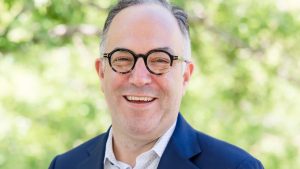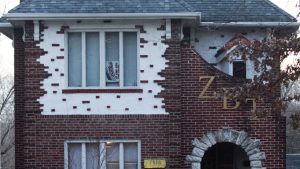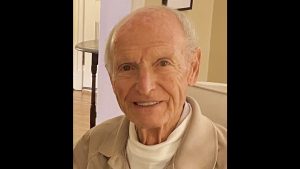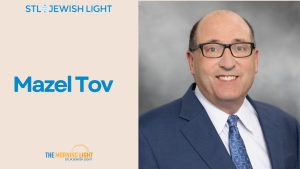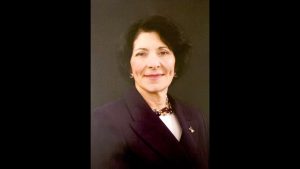Rabbis are not pessimistic about future challenges
Published October 9, 2007
With the start of a new year, rabbis are re-envisioning their goals and actions both locally and beyond. In his JTA article based on STAR’s national Rabbinic Leadership Survey: Vision 5768, writer Ben Harris suggests that rabbis are pessimistic about the future.
Yet the data suggest that rabbis, like most involved Jews, are concerned about the Jewish future but confident that the actions they are taking will have a positive impact on the community.
For example, when asked which statement best describes the current state of American Jewry, 47 percent of the rabbis responded: “There is a renaissance of Jewish life in America.” Only 12 percent of the respondents said “the quality of Jewish life in America is declining.”
It is inaccurate to imply that those who are unsure are “pessimistic.” In fact, the vast majority of rabbis are aware that they must continue to pursue ways of engaging members, reaching out beyond the core community and including participants who have historically been sidelined by the synagogue.
In its work with independent and denominational congregations, STAR (Synagogues: Transformation and Renewal) has seen a great willingness by rabbis and leadership to experiment with various media to encourage participation in congregational life. Activities range from exploring new models of membership, such as not requiring an immediate payment of dues or offering heavily reduced fees for those exploring synagogues, to rabbis and synagogue leaders blogging, podcasting and webcasting to extend the reach of their congregations.
Additionally, more than 170 congregations have adapted STAR’s Synaplex initiative. This community-building framework enables congregations to construct “mini-communities” of Jewish interest based on the desires of members and seekers.
On a given Shabbat in a Synaplex synagogue you might find anything from “Torah and Tai Chi” to drumming circles alongside the regular services.
Synaplex isn’t just about the innovative activities. It also encourages broader participation since experiences are led both by professionals and congregants sharing their talents with the community.
Another example of rabbis working to reach out to community members and encourage participation of those who have been less involved is through the program “Call Synagogue Home.” The program uses Jewish lifecycle events such as brit milah, baby namings and b’nai mitzvah to reach out to interfaith families and strengthen their bond to the synagogue. It is being piloted at 17 synagogues in Atlanta, Philadelphia and the West Valley of Los Angeles.
These congregations are also exploring non-traditional moments to further this connection and be infused with Jewish meaning — moments such as hanging a mezuzah, sending a child to kindergarten or to religious school for the first time, or starting a first or new job.
What is most apparent is that many synagogues are seeking ways to change the fundamental assumptions about membership and participation. Rabbis are honest about the problems that synagogues exhibit and know that critiques are often leveled at them — they are still not shaping enough people’s lives and often are perceived as out of touch and parochial.
However, with their heightened willingness to rethink their roles and congregations, rabbis are hopeful that they will overcome challenges to make Judaism more relevant in the lives of American Jews beyond the High Holidays.
Their reported High Holidays sermon topics reflect the importance they attach to greater outreach and engagement. Many have spoken about “participation in Jewish life beyond the High Holidays services.”
Among the many respondents to the survey, Rabbi Michelle Fisher from Congregation B’nai Shalom in Walnut Creek, Calif., said that she focused her Rosh Hashanah sermon on the need to build a stronger community. Rabbi Menachem Creditor of Congregation Netivot Shalom in Berkeley, Calif., said he tied his High Holidays speeches to ethics, Israel and building a Jewish community.
Overall, the rabbis in the survey responded that their primary goal is to “inspire congregants with a compelling vision of Jewish life.” And when asked what is the most pressing issue for the U.S. Jewish community for the year ahead, more than a third of the rabbis, 35 percent, responded “making Judaism more relevant.”
The rabbis surveyed also understand that participation can only grow through education and inclusion. For example, many rabbis have seen a rise in gay/lesbian inclusion efforts in the past three years and the vast majority of rabbis, 92 percent, are overwhelmingly positive about this engagement of those who have been less involved in the past, such as gays and lesbians, interfaith couples, single parents and singles. As a result, 87 percent of rabbis believe they will see greater participation in the synagogue as a result of outreach efforts.
Rabbis clearly grasp that we are at a turning point. They feel a great sense of urgency to do more to connect people to Jewish life and community through the synagogue. As STAR continues to help them deepen their congregants’ connection to Judaism, we are confident that together we’ll make 5768 a more vibrant Jewish year.
Rabbi Hayim Herring is executive director of STAR (Synagogues: Transformation and Renewal).




